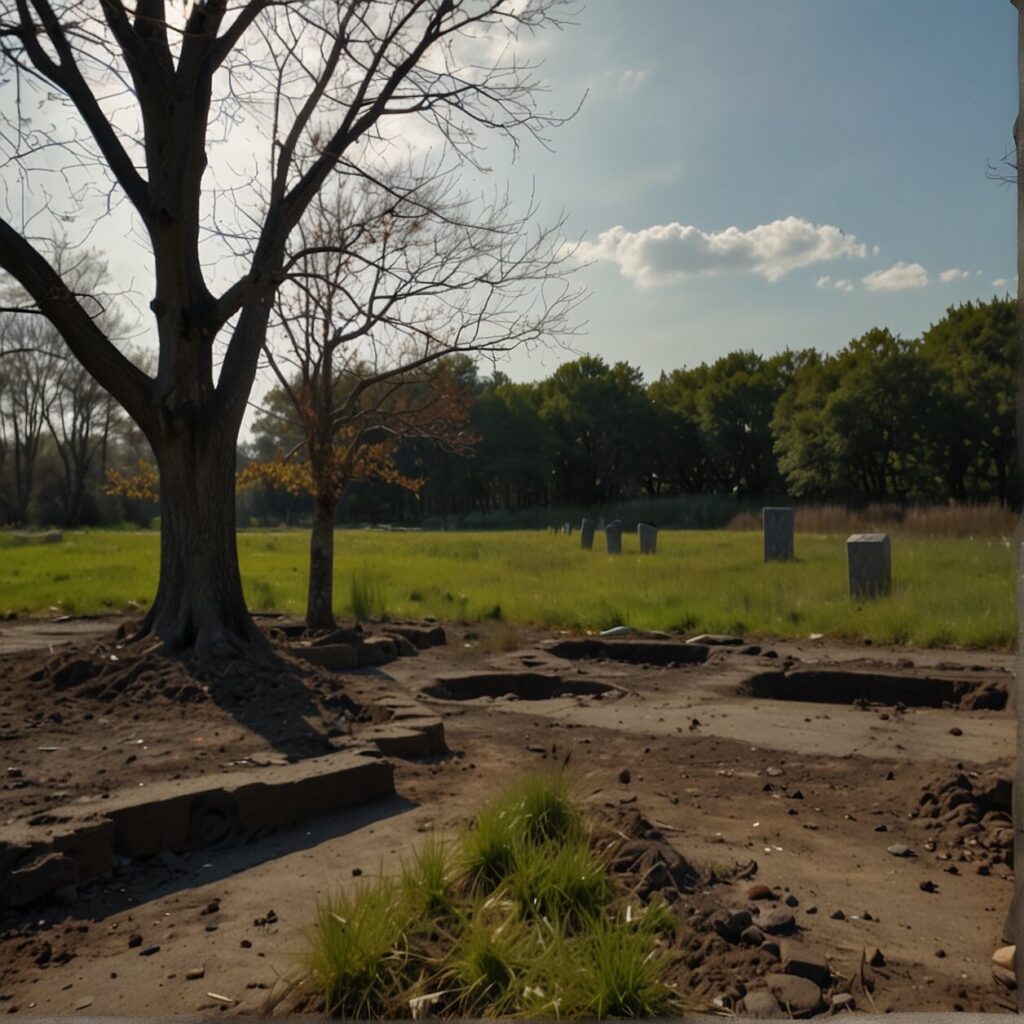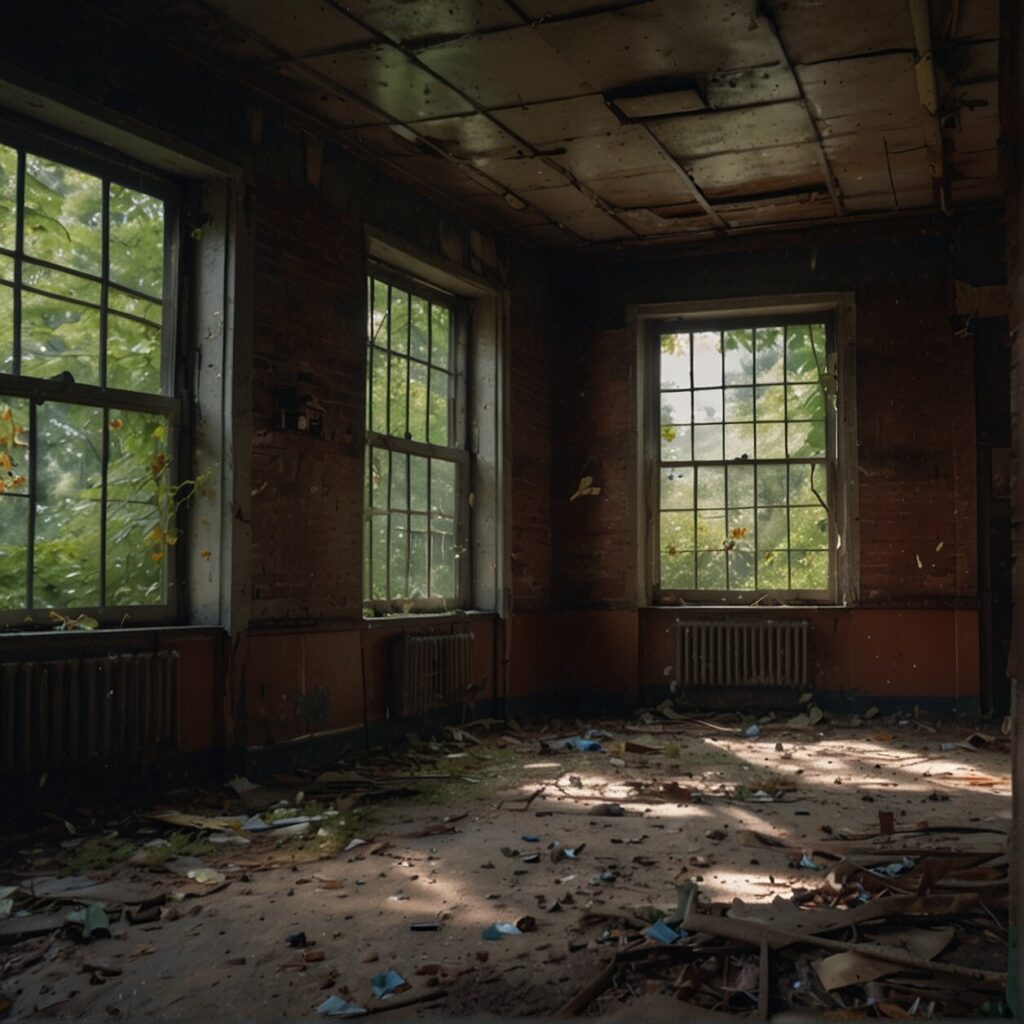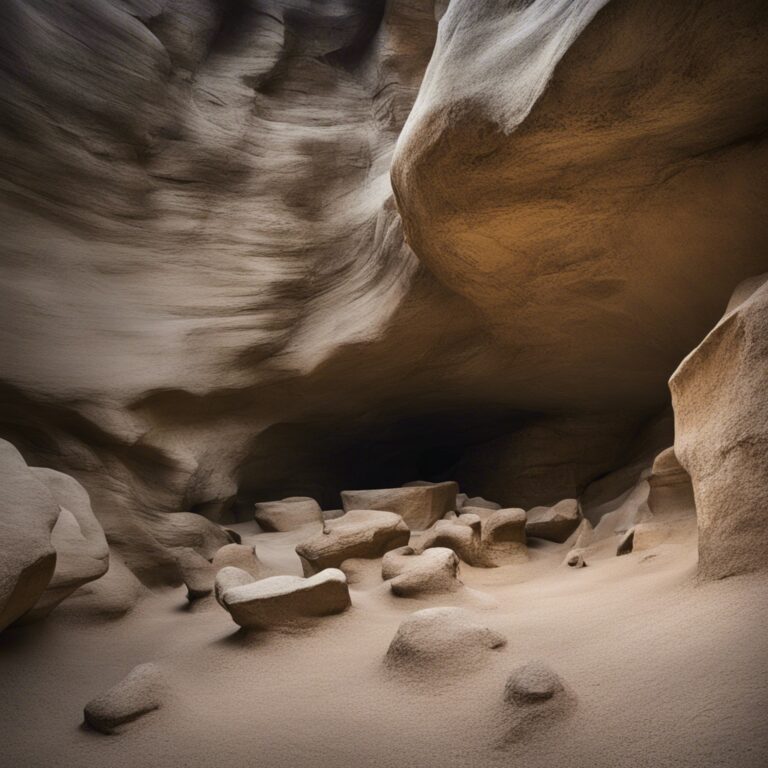Exploring the Abandoned Islands of New York
Imagine you’re an adventurer, eager to explore the less-trodden terrains of New York City, you’ve scoured every inch of Manhattan, paid homages to the iconic lady Liberty, and walked the buzzing boroughs. Now, you’re ready for an adventure that’ll whet your historian appetite and quench your thirst for urban exploration. How about a trip back in time? We’re not just talking about museums and old historical buildings. We’re charting the course to New York’s abandoned islands, each with its timeless tales etched into its hallows. Be prepared, however, this ride isn’t for the faint-hearted, it’ll be part history, part adventure, and a dash of the supernatural.
Let’s embark on a unique journey, one that allows you a peek into the vault of history resting amidst the waves. These deserted islands not only offer a break from the hustle of everyday city life, but they’re also poignant reminders of once-bustling life, now surrendered to either nature or neglect.
“Abandoned islands are like time capsules, each whispering a tale of the past and holding the key to a forgotten era. Their eerie charm is a call to explorers who, much like archaeologists, dig into their past, discovering stories and revealing secrets.”
Ready to jumpstart your island-hopping adventure? Hold on tight, we’re just getting started.
Unlocking the Past: A Historical Dive into New York’s Deserted Isles
If you listen closely, the faint whispers of New York’s deserted islands tell captivating tales of the past. Each abandoned island in the city’s surrounding waters holds intriguing history patiently awaiting your discovery. Picture yourself stepping back in time and uncovering secrets long-forgotten during your visits.
One such island is North Brother Island, ominously home to Riverside Hospital in the late 1800s, which catered to patients with infectious diseases. The island became well-known due to a notorious resident, Typhoid Mary, who was isolated there for years. Today, the island bears remnants of its harrowing past with decaying structures that once served as quarantine facilities and dormitories. Of course, access is restricted, and visits can only occur with permission. Yet, the captivating story of North Brother Island serves as a lasting testament to New York City’s enduring resilience in the face of disease.
Equally intriguing, Hart Island reveals a darker side of history, functioning as a Potter’s Field or public cemetery. With over a million souls interred, it’s an island dense with silent narrations of life and death. Strictly guided visits respect the solemn nature of the site, evoking sobering perspectives of our collective mortality. Hart Island is not only an homage to the past but also a poignant symbol of the city’s ongoing conversation about inequality and social justice.
Straying from the solemn is Governors Island. Although not entirely abandoned, this area displays a fascinating blend of the past and present. Before transformation into a public space bustling with seasonal activities, Governors Island served as a military base, with its historical buildings and forts offering a peek into a time when the island was a critical defense point. A visit here is like time-travel punctuated with scenic city panoramas and vibrant recreational activities.
Finally, there’s Roosevelt Island, previously known as Welfare Island and Blackwell’s Island before that. Once the site of a prison, a hospital for smallpox patients, and asylums in the 19th century, it has evolved into a residential area. A jaunt among its thriving population and modern structures provides a stark contrast against its tumultuous history, offering a standing reminder of New York’s capacity for reinvention.
New York’s deserted islands do more than just break up the city’s famous skyline. They offer you an extraordinary journey through time, depicting the city’s depth and character beyond its towering giants and bustling streets. So, ready your explorer’s spirit – you have history to uncover.

Practical Guide: How to Safely Explore Abandoned Islands in New York
Embarking on an adventure to the abandoned islands of New York is no ordinary day-trip. It requires careful planning and hefty respect for the historic landmarks you’re about to explore. Let’s dive deeper into how to navigate your adventure safely and meaningfully.
Briefing: Know Before You Go
As an explorer, your first challenge is understanding the unique conditions that each island presents. Some islands require special permission from local authorities due to their delicate historical structures or nature conservation efforts. It’s essential to conduct proper research about the different restrictions and regulations before heading out. A quick online search or a call to the city’s park department can provide the necessary information.
Guided Tours: The Safe Option
An excellent way to ensure your safety and deepen your understanding of the islands’ history is through guided tours. Many abandoned islands in New York offer structured tours with experienced tour operators who are well-versed in the islands’ unique stories. Participating in these tours not only guarantees your security but also enriches your experience manifold.
Teamwork: Exploring with Companions
Exploring abandoned areas is always safer in groups. A buddy can help you navigate tricky terrains, respond in case of emergencies, and enhance your overall experience. Remember, your expedition isn’t just about discovery; it’s also about sharing historical narratives and bonding over shared experiences.
Gear Up: Adequate Equipment is Key
Your equipment forms the backbone of your island adventure. Ensure you pack essentials like sturdy walking shoes, appropriate clothing for the weather, snacks and water, first-aid kit, flashlight, and a fully charged phone. Check out the previously mentioned ‘Surviving the Elements’ section for a comprehensive packing guide.
Respect: Leave No Trace
Finally, respect is the cornerstone of exploring. Tread lightly, avoid disturbing natural habitats, respect historical structures, and learn about ‘Leave No Trace’ principles before your visit. Always remember you’re a visitor—a responsible explorer aims to enjoy without leaving a negative impact.
Island Etiquette: Exploring with Respect and Curiosity
Exploring New York’s abandoned islands offers an exhilarating blend of adventure, solitude, and history. The echoes of the past whisper through the decaying structures, and the beautiful paradox of a vibrant ecosystem thriving amidst human neglect is certainly humbling. Yet, it’s essential to remember to tread lightly, respecting both the fragile natural environment and the stories embedded within it. Etiquette isn’t just about politeness; it’s a keystone of responsible exploration.
Start by understanding that these islands are not your conventional tourist attractions. You’re stepping into areas representative of a bygone New York era. Thus, treat each site with the reverence it deserves. Leave historical artefacts undisturbed, and avoid marking or damaging structures. Remember, your goal as an urban explorer is to observe and absorb, not to interfere.
Another vital component of island etiquette is respecting the wildlife. Keep noise levels to a minimum to avoid disturbing their natural habitats. If you happen to come across any wildlife, observe from a distance; do not feed or attempt to interact with them. Their life rhythm shouldn’t be disrupted by your presence.
Finally, keep in mind, these deserted islands can sometimes turn out to be someone’s secret ‘home’. Certain individuals, away from the public gaze, have chosen to inhabit these isolated realms. If you encounter such dwellers, treat them with dignity and respect their need for solitude or privacy.
Exploration is about pushing boundaries, but it’s essential to know when to hold back. Always choose courtesy over curiosity. As the saying goes, “Take only pictures, leave only footprints.” That is the essence of island etiquette.
Getting There: Transportation Tips for Visiting New York’s Abandoned Islands
Take it from us, the journey to these mostly-forgotten havens is often an adventure itself. Striking the balance between accessibility and exploration can be tricky, but don’t fret, we’re here to help with your navigation worries.
New York City is typically your main starting point when venturing out to these hidden realms. Ferries are often the most viable option for reaching the islands, but each island has its own operational schedule and restrictions. For instance, some islands are accessible only through guided tours.
Let’s break the options down for you:
The Ferry Factor: Your Key to the Isles
Ferries operate from various points in the city. Popular services include the Staten Island Ferry and NY Waterway. Remember to check the specific operation times of these services as they can vary. Keep in mind that ferry services may also be susceptible to weather changes, so always have a backup plan.
The Guided Path: Touring the Untrodden
For some islands like North Brother Island and Hart Island, access is exclusively via approved guided tours. This method ensures a knowledgeable guide at your side to navigate the path and provide intriguing historical contexts. It’s an adventure with a touch of learning, if you ask us.
Kayaking: For the Brave and Eager
If you’re feeling brave, kayaking is another thrilling method of transportation to explore the islets scattered amidst the East River. However, this adventure is for the experienced – current flows can be strong, and weather conditions unpredictable. Always prioritize your safety and ensure you’re equipped with suitable kayaking gear and skills.
Wherever your adventurous spirit may lead you, remember – the journey is often just as beautiful as the destination itself. Good luck, and happy exploring!

Surviving the Elements: What to Pack for Your Island Adventure
With your sense of adventure ignited and your transportation settled, your next focus should be on what to carry to safely explore the hidden jewels of New York’s derelict islands. Challenging the elements need neither be a test of perseverance nor a reckless show of resilience. As you plan to explore these off-the-grid locations, here’s a handy guide on what to pack for your island adventure.
Weather-appropriate Clothing
A key element to consider when packing is the unpredictable weather. New York’s coastal regions can often experience swift changes in temperatures and wind conditions. Lightweight, breathable, yet durable clothing is highly recommended. Depending on the time of year, you may need to include a waterproof jacket, mitts or gloves, a brimmed hat, and sturdy footwear. Dress in layers so you can adjust to varying weather conditions through the day.
Essential Tools and Devices
Guides, maps, and compasses can serve as your lifeline when you are navigating the ghostly contours of these abandoned islands. You may also want to bring along binoculars to spot wildlife and get a better look at hard-to-reach areas. Ensure your mobile is fully charged before setting off and keep it safe in a waterproof pouch. A portable solar charger can also be a valuable addition to your backpack.
First Aid and Personal Supplies
Since these islands are abandoned, do not expect to find convenience stores or bathroom facilities. A basic first-aid kit, including band-aids, antiseptic wipes, tweezers, and any personal medication, is a must. Carry necessary toiletries, like tissue paper or wet wipes, and personal hygiene items in a mini kit. Remember to carry enough water and high-energy snacks as well.
Journal and Camera
Finally, keep space in your backpack for a journal and a good camera. The mystique and tranquility of these forgotten islands are simply too precious not to be captured, either in photographs or in your personal reflections.
Planning ahead and packing smart will equip you to fully soak in the beauty and eerie charm of New York’s abandoned islands, transforming your experience from merely thrilling to positively unforgettable!
FAQ’S
Now, we’ll address some of the Frequently Asked Questions (FAQs) about exploring the intriguing abandoned islands of New York. These questions cover various essential topics, such as the most renowned islands, safety tips, required equipment, best visiting times, and photography etiquette. So, let’s dive into these important concerns to ensure your adventure is as smooth and enjoyable as possible.
What are the most famous abandoned islands in New York?
Without a doubt, New York’s abandoned islands have their fair share of fame and mystique. North Brother Island tops the list with its erstwhile isolation hospital, which incidentally, was home to Typhoid Mary. Now a bird sanctuary, this island is steeped in fascinating history.
Meanwhile, Hart Island harbors a poignant history as the city’s public burial ground for unclaimed bodies, commonly known as Potter’s field. Its graves tell countless untold stories.
Then there’s Roosevelt Island. Though not entirely abandoned, pieces of its past, like the Smallpox Hospital ruins, imbue the locale with an air of mystery and appeal to those interested in the hidden aspects of New York City’s history.
Finally, you shouldn’t forget about Ellis Island’s contagious disease wards. While the main immigration building is a popular tourist hotspot, the southern side of the island remains abandoned, housing the ruins of a former hospital complex which catered specifically to immigrants with contagious diseases.
All these islands promise a myriad of exploratory adventures coupled with unique historical insights, making each trip a journey back in time.
What are some safety tips for exploring abandoned islands in New York?
Indeed, adventurous journeys into New York’s abandoned islands do carry real risks, and while these elements can add a thrill to your adventure, safety should never be compromised. Therefore, let’s discuss some vital safety tips for delving into these deserted isles.
Be Aware of Your Surroundings
The very nature of these islands means that structures and landscapes have been left to the mercy of weather and time, consequently posing hazards such as falling debris and uneven terrain. Be constantly aware of your surroundings, and always tread with caution.
Don’t Go Into Restricted Areas
Keep in my mind that some areas on these islands could be dangerous or legally restricted. All fences, barricades, and signage are there for your protection. Undeniably, dismissing these could result in penalties or, worse, serious harm.
Bring A Reliable Means of Communication
In the midst of the focus on exploration, do not neglect the essentials. A reliable form of communication, like a fully-charged cell phone or a radio, should be part of your gear. Should an emergency arise, you’ll need to be able to call for help. A battery pack or solar charger could reassure that your device stays working for an extended period.
Contact Details of Local Authorities
Prior to your trip, gather contact details for local law enforcement and coastguard stations. In the case of immediate danger or an accident, you’ll be grateful to have these numbers at hand rapidly.
Stick to Daylight
Most importantly, plan your explorations to take place during daylight hours. With the absence of public lighting, these islands can become disorientingly dark after sunset, exacerbating potential hazards and obstacles. In an unfamiliar environment, the darkness may drastically increase the risk factor and impede your ability to navigate safely back to your departure point.
What equipment is necessary for exploring abandoned islands in New York?
Embarking on your intrepid island adventure requires smart, thoughtful preparation. Here’s a handy list of essential gearthat’s crucial for your journey to New York’s abandoned islands:
Navigation Equipment
To start with, navigation equipment is an absolute must. A detailed map of the island and a compass are essential tools to safely navigate the terrain. While you might be tempted to rely solely on your smartphone, remember that technology can fail, batteries can drainage, and signal can be spotty, so having old-school, physical navigation tools is important.
Flashlight and Spare Batteries
No matter the time of day you plan to explore, a flashlight is a necessity. Abandoned buildings often lack natural light, and if dusk sneaks up on you, you’ll want to have reliable light sources. Don’t forget to pack a couple of sets of spare batteries too.
Food and Water
Be sure to bring ample food and water. Even if your plan is just to spend a few hours exploring, contingencies might keep you on the island longer than intended. Non-perishable snacks, energy bars, and a refillable water bottle are ideal for such trips. Remember, hydrate or dydrate!
Utility Knife
A utility knife also deserves a place in your gear list. It’s a versatile tool that can come in handy in a variety of situations, from cutting rope and tape to opening cans or serving as a makeshift screwdriver.
Binoculars
You might also want to bring along a pair of binoculars. Not only could they be a lifesaver in spotting danger from afar, but they can also enhance your exploration, allowing you to discover and examine distant or inaccessible details.
Remember, safety should be your number one priority when exploring abandoned islands. Ensuring that you have appropriate and reliable equipment will only enhance your overall experience and ease your mind during your adventure.
What are the best times of year to visit New York’s abandoned islands?
The beauty of New York’s abandoned islands can be appreciated at any time of the year. However, like any outdoor adventure, the experience significantly varies depending on the season. Therefore, the best time to visit could largely depend on your personal preferences and objectives.
The spring months, which extend from April to June, sprinkle the islands with lush greenery and burgeoning life after the cold winter months. The temperature is relatively mild during this time, making it pleasant for exploratory walks, treks, or other activities that involve physical exertion.
Summer months – July, August, and early September – often attract visitors who enjoy warm weather. However, keep in mind that these months can become quite hot, particularly in July and August. If you’re planning to visit during this period, make sure to prepare adequate outdoor summer gear and stay hydrated.
Autumn, running from late September to November, greets visitors with a magical display of colorful foliage. The crisper air and cooler temperatures are a delight for walking around and doing light activities. Plus, the fall colors provide an exceptionally beautiful backdrop for photography enthusiasts.
Winter, from December to March, offers its own unique appeal with serene, snow-covered landscapes. This season can be quite chilly and may require appropriate winter clothing, but the views and tranquility can be well worth it.
Finally, remember that regardless of the season, it’s always important to check the local weather forecast before making any travel plans. Sudden weather changes can occur even in the “best” months, especially in coastal areas like New York’s islands.
Therefore, the best time to visit New York’s abandoned islands typically comes down to your individual comfort level with weather conditions, and what you wish to experience during your visit.
Can I take photographs on New York’s abandoned islands?
Absolutely, you can! And, it’s a splendid idea. Bringing along a camera on your island explorations is a fabulous way to document the fascinating sights you’ll encounter. However, when it comes to photographing these historical locations, there are a few things to remember.
Firstly, remember to consider the spaces and structures you’re photographing. Many of these areas are fragile, and inadvertently flashing bright lights can deteriorate the delicate state of these historical sites. Always use natural lighting when possible, especially in old buildings or around aging pieces of history that may be sensitive to light exposure. If needed, utilize the low light settings on your camera rather than using a flash.
Secondly, while it’s great to share your experiences with others, be cautious about revealing specific locations that may not be ready for a surge of visitors. By all means, celebrate the beauty and history of these forgotten sites, but be mindful of the potential impact your disclosures may have on their preservation.
Finally, show respect in your captions and comments when sharing your photos. These abandoned sites were once alive with inhabitants and stories. It’s our duty as explorers and photographers to ensure their legacy is preserved and respectfully shared.
So go on, keep that camera close at hand and capture the beauty and mystery of New York’s abandoned islands. But, always bear in mind: preservation over presentation.







